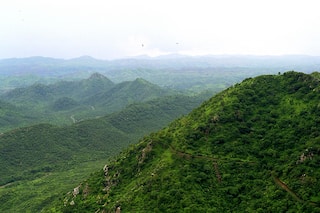World Wildlife Day 2022: History, Theme, Significance — All You Need To Know
The United Nations World Wildlife Day is observed annually on March 3 to celebrate and raise awareness of the world’s wild animals and plants.

New Delhi: World Wildlife Day is observed annually on March 3, worldwide. The day is an opportunity to celebrate the many beautiful and varied forms of wild fauna and flora and to raise awareness of the multitude of benefits that their conservation provides to people.
World Wildlife Day: History
On December 20, 2013, the United Nations General Assembly (UNGA), at its 68th session, proclaimed March 3 as the UN World Wildlife Day to celebrate and raise awareness of the world’s wild animals and plants. March 3 is also the day of signature of the Convention on International Trade in Endangered Species of Wild Fauna and Flora (CITES) in 1973.
According to the UN, the UNGA resolution designated the CITES Secretariat as the facilitator for the global observance of this special day for wildlife on the UN calendar. World Wildlife Day has now become the most important global annual event dedicated to wildlife.
World Wildlife Day: Significance
The animals and plants that live in the wild have an intrinsic value. The wild fauna and flora contribute to the ecological, genetic, social, economic, scientific, educational, cultural, recreational and aesthetic aspects of human well-being and to sustainable development.
According to the UN, World Wildlife Day is an opportunity to celebrate the many beautiful and varied forms of wild fauna and flora and to raise awareness of the multitude of benefits that their conservation provides to people. At the same time, World Wildlife Day reminds us of the urgent need to step up the fight against wildlife crime and human-induced reduction of species, which have wide-ranging economic, environmental and social impacts. Considering these various negative effects, Sustainable Development Goal 15 focuses on halting biodiversity loss.
World Wildlife Day 2022: Theme
This year, the theme of World Wildlife Day is “Recovering key species for ecosystem restoration”. Celebrations under this theme will seek to draw attention to the conservation status of some of the most critically endangered species of wild fauna and flora, and to drive discussions towards imagining and implementing solutions to conserve them, according to the official website of the UN World Wildlife Day.
Also, all conversations will be inspired by and seek to inform efforts towards the achievement of UN Sustainable Development Goals 1, 2, 12, 14, and 15, which are No Poverty, Zero Hunger, Ensure sustainable consumption and production patterns, Climate Action, Life Below Water and Life on Land, respectively.
Over 8,400 species of wild fauna and flora are critically endangered, while close to 30,000 more are understood to be endangered or vulnerable, according to data from the International Union for Conservation of Nature (IUCN) Red List of Threatened Species. It is suggested that over a million species are threatened with extinction, based on these estimates.
All life on Earth is threatened by the continued loss of species, habitats and ecosystems. People worldwide rely on wildlife and biodiversity-based resources to meet all our needs, from food, to fuel, medicines, housing, and clothing. Millions of people depend on nature as the source of their livelihoods and economic opportunities.
This year, World Wildlife Day will therefore drive the debate towards the imperative need to reverse the fate of the most critically endangered species, to support the restoration of their habitats and ecosystems and to promote their sustainable use by humanity.






































